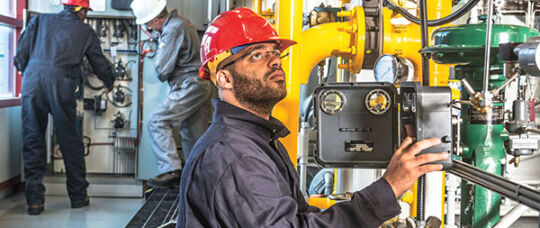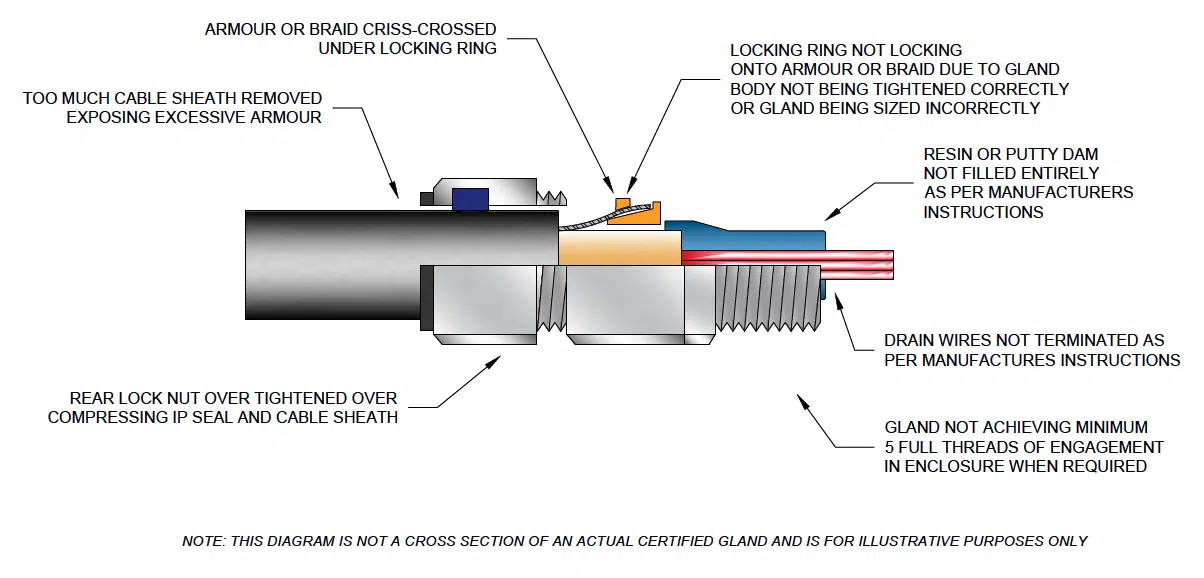The Of Roar Solutions
The Of Roar Solutions
Blog Article
The Only Guide to Roar Solutions
Table of ContentsUnknown Facts About Roar SolutionsThe Greatest Guide To Roar SolutionsRoar Solutions for Dummies
In such an atmosphere a fire or surge is feasible when 3 standard problems are satisfied. This is frequently described as the "unsafe location" or "burning" triangle. In order to secure installments from a possible surge an approach of analysing and classifying a possibly harmful area is called for. The purpose of this is to make certain the proper choice and installment of devices to eventually stop an explosion and to ensure safety and security of life.
(https://www.sooperarticles.com/authors/794854/thomas-carrillo.html)
No tools ought to be set up where the surface area temperature of the devices is above the ignition temperature level of the provided danger. Below are some usual dirt unsafe and their minimal ignition temperature level. Coal Dirt 380C 225C Polythene 420C (thaws) Methyl Cellulose 420C 320C Starch 460C 435C Flour 490C 340C Sugar 490C 460C Grain Dirt 510C 300C Phenolic Material 530C > 450C Aluminium 590C > 450C PVC 700C > 450C Residue 810C 570C The possibility of the hazard being present in a focus high sufficient to trigger an ignition will vary from place to location.
In order to categorize this risk an installment is divided into locations of threat relying on the amount of time the harmful exists. These areas are referred to as Areas. For gases and vapours and dirts and fibers there are 3 zones. Zone 0 Area 20 A hazardous ambience is extremely likely to be existing and may exist for lengthy durations of time (> 1000 hours each year) or perhaps constantly Zone 1 Area 21 An unsafe environment is possible however not likely to be existing for extended periods of time (> 10 450 C [842 F] A classification of T6 means the minimal ignition temperature level is > 85 C [185 F] Harmful area electrical devices perhaps designed for usage in higher ambient temperatures. This would suggested on the score plate e.g. EExe II C T3 Ta + 60C( This implies at 60C ambient T3 will certainly not be exceeded) T1 T1, T2, T3, T4, T5, T6 T2 T2, T3, T4, T5, T6 T3 T3, T4, T5, T6 T4 T4, T5, T6 T5 T5, T6 T6 T6 A T Course score of T1 means the maximum surface area temperature created by the instrument at 40 C is 450 C. Assuming the linked T Class and Temperature rating for the devices are appropriate for the area, you can always make use of an instrument with a much more rigorous Division rating than needed for the area. There isn't a clear answer to this inquiry. It really does rely on the type of equipment and what repair work require to be executed. Devices with particular examination procedures that can not be performed in the area in order to achieve/maintain third event rating. Have to come back to the manufacturing facility if it is prior to the tools's service. Field Repair By Authorised Worker: Complicated testing may not be required nevertheless specific procedures may require to be adhered to in order for the equipment to keep its 3rd party score. Authorized personnel must be used to perform the work properly Fixing should be a like for like replacement. New element have to be considered as a direct replacement needing no unique testing of the devices after the fixing is complete. Each tool with a hazardous rating ought to be examined individually. These are outlined at a high degree listed below, however, for even more thorough details, please refer straight to the standards.
The 20-Second Trick For Roar Solutions
The devices register is an extensive database of equipment records that includes a minimum set of fields to identify each thing's place, technological specifications, Ex lover category, age, and environmental information. This info is important for tracking and handling the tools successfully within dangerous areas. In comparison, for regular or RBI sampling examinations, the grade will certainly be a mix of In-depth and Close inspections. The ratio of Detailed to Shut inspections will be identified by the Equipment Risk, which is evaluated based upon ignition danger (the possibility of a resource of ignition versus the likelihood of a combustible atmosphere )and the harmful location classification
( Area 0, 1, or 2). This variant will certainly likewise affect the resourcing requirements for work prep work. Once Great deals are specified, you can establish sampling plans based on the example size of each Lot, which refers to the variety of arbitrary tools products to be checked. To determine the needed example dimension, 2 aspects need to be examined: the dimension of the Whole lot and the category of examination, which shows the level of effort that must be used( minimized, normal, or increased )to the evaluation of the Great deal. By incorporating the group of examination with the Lot size, you can after that develop the proper being rejected requirements for a sample, meaning the permitted variety of malfunctioning things located within that example. For even more information on this procedure, please refer to the Energy Institute Guidelines. The IEC 60079 conventional recommends that the maximum interval in between assessments need to not go beyond three years. EEHA assessments will certainly likewise be carried out outside of RBI campaigns as part of set up upkeep and tools overhauls or repair work. These inspections can be attributed towards the RBI sample sizes within the see this here influenced Whole lots. EEHA inspections are conducted to recognize faults in electrical devices. A weighted racking up system is vital, as a solitary item of equipment might have numerous faults, each with differing degrees of ignition danger. If the mixed rating of both examinations is less than twice the mistake score, the Lot is deemed appropriate. If the Lot is still taken into consideration unacceptable, it has to go through a full evaluation or justification, which might trigger more stringent evaluation methods. Accepted Great deal: The reasons for any mistakes are identified. If an usual failure setting is discovered, additional tools might need evaluation and fixing. Faults are identified by seriousness( Safety, Honesty, Housekeeping ), making certain that urgent issues are evaluated and resolved quickly to alleviate any kind of effect on safety or operations. The EEHA data source need to track and record the lifecycle of faults together with the restorative actions taken. Implementing a durable Risk-Based Evaluation( RBI )strategy is crucial for making certain conformity and safety in handling Electric Tools in Hazardous Locations( EEHA) (eeha). Automated Mistake Rating and Lifecycle Monitoring: Easily take care of mistakes and track their lifecycle to boost examination precision. The intro of this assistance for risk-based assessment better strengthens Inspectivity's position as a best-in-class option for governing conformity, in addition to for any asset-centric evaluation use case. If you want finding out more, we welcome you to request a demonstration and uncover just how our remedy can change your EEHA administration processes.
The smart Trick of Roar Solutions That Nobody is Talking About

In regards to eruptive danger, a harmful area is an atmosphere in which an explosive ambience is present (or might be anticipated to be present) in amounts that need unique safety measures for the construction, installment and use equipment. high voltage courses. In this article we check out the challenges encountered in the office, the danger control steps, and the called for proficiencies to work securely
It is a consequence of modern life that we manufacture, save or handle a series of gases or fluids that are deemed combustible, and a variety of dusts that are deemed flammable. These materials can, in certain conditions, create explosive ambiences and these can have significant and terrible effects. A lot of us are familiar with the fire triangular get rid of any one of the three aspects and the fire can not occur, yet what does this mean in the context of hazardous areas? When damaging this down into its most basic terms it is essentially: a combination of a particular amount of release or leakage of a certain compound or product, blending with ambient oxygen, and the presence of a source of ignition.
In a lot of instances, we can do little about the degrees of oxygen airborne, yet we can have considerable impact on resources of ignition, for instance electric equipment. Dangerous areas are recorded on the unsafe location category illustration and are determined on-site by the triangular "EX-SPOUSE" indicator. Right here, among various other vital details, areas are divided into three types relying on the threat, the chance and period that an explosive ambience will certainly exist; Area 0 or 20 is regarded one of the most harmful and Area 2 or 22 is regarded the least.
Report this page